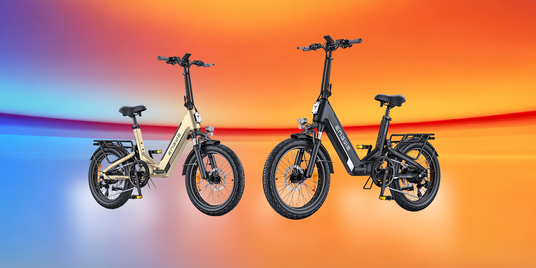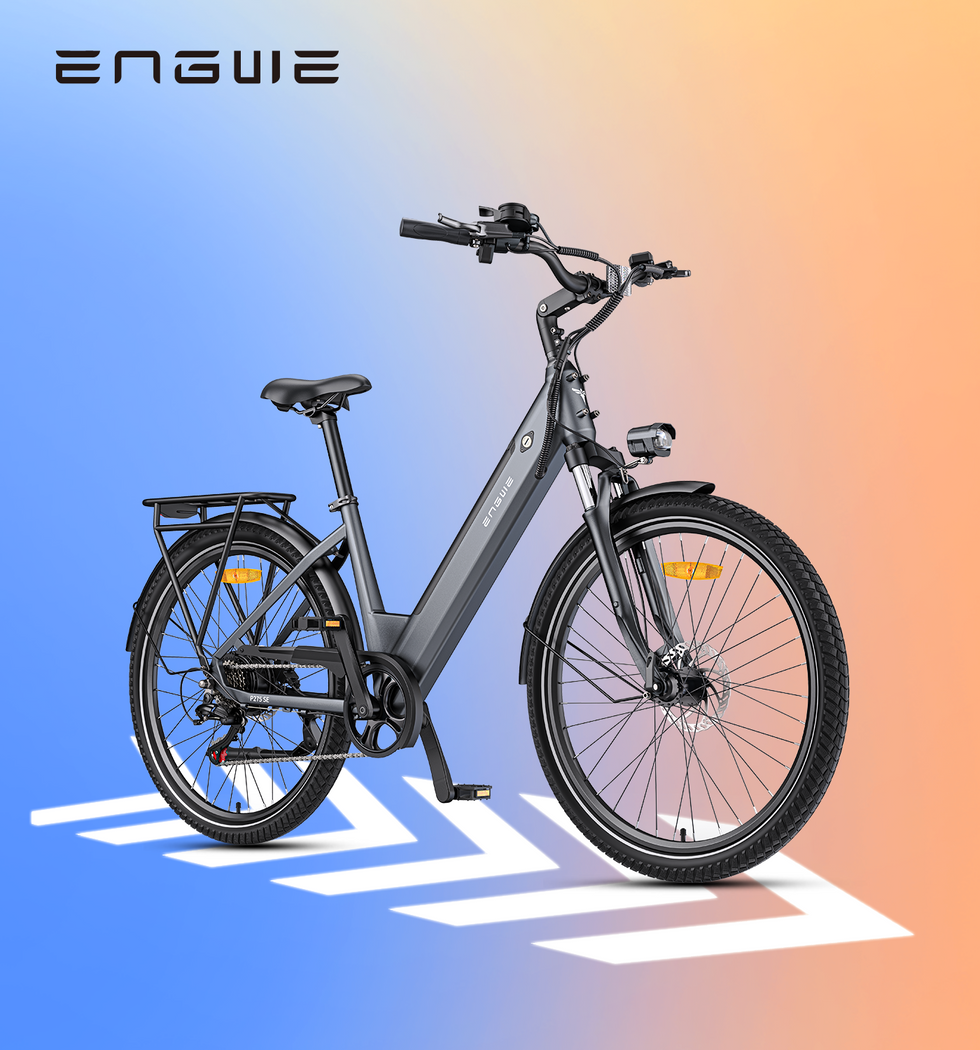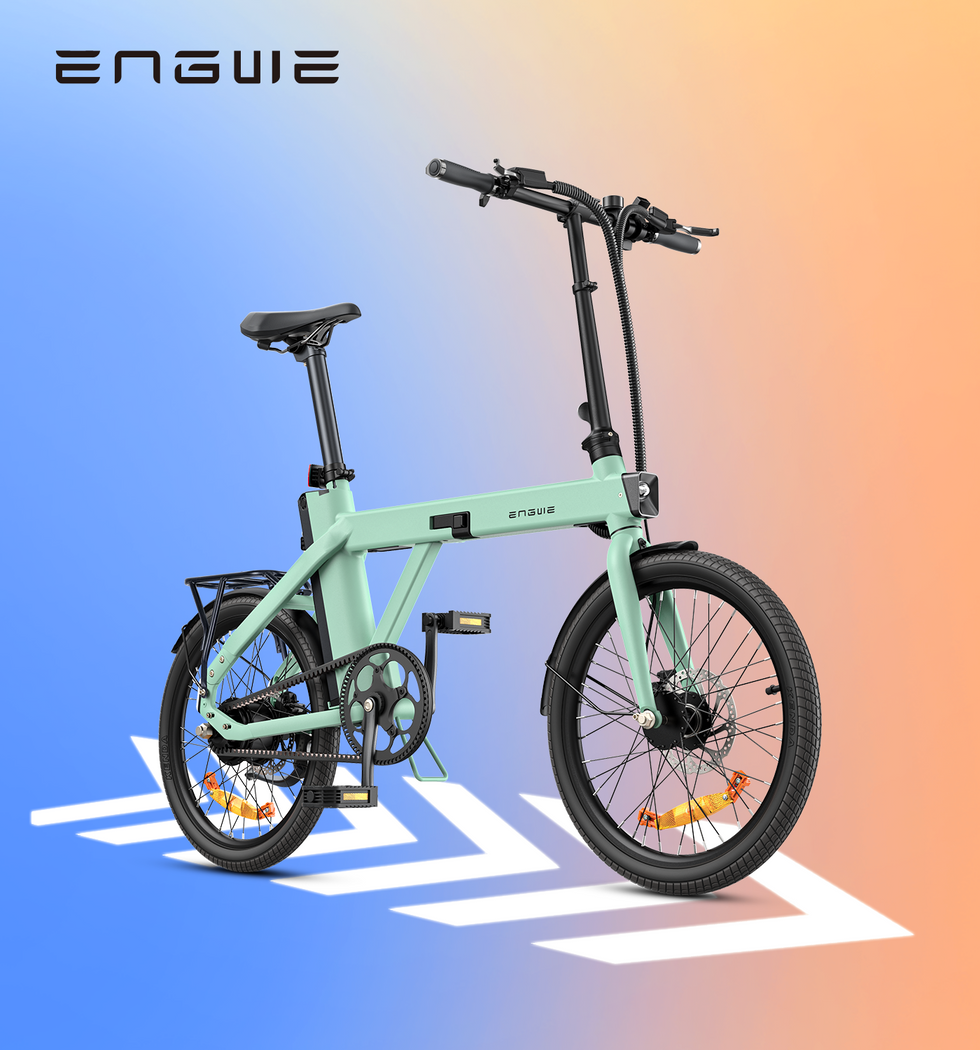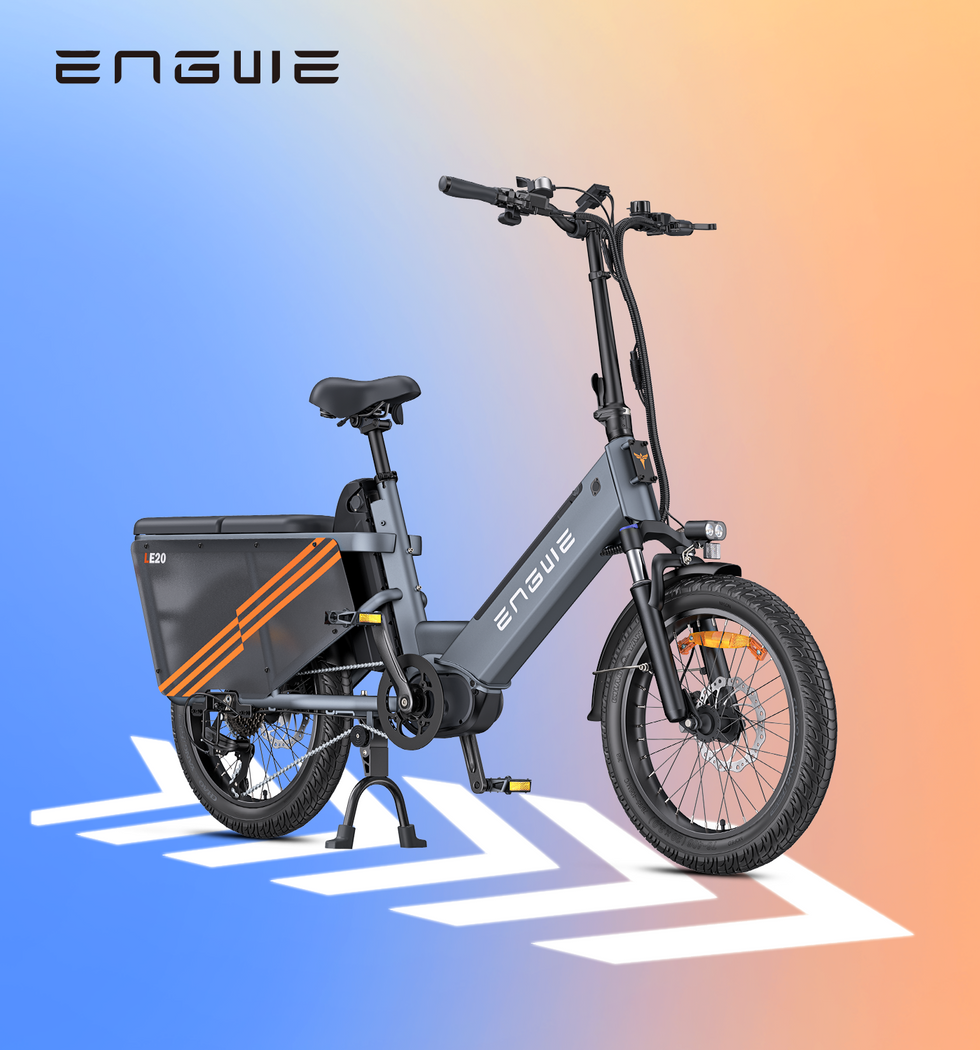Is This E-bike Perfect For You?
The world of cycling is now more accessible than ever, and when it comes to being able to just get out and ride, there is a special machine that is a perfect fit. I am referring to the step-through fat tyre e-bike. Through my years, I’ve tended to find that people hold themselves back from biking, held back only by the barriers: the need to hoist a leg over a high frame to get on the bike, the jarring bumps in the road on the way to work, the pleasure, or challenge... or utter intimidation of a steep hill. This new kind of electric bike is fun, fast, and easy to ride, feeling more like you’re being lifted up, and the bike is taking you to faraway places. If you are wondering what makes these bikes special, or simply whether one would make the perfect travel companion on your adventures, we can help.
A Look at The Ideal “Rider”
- You are 5’0” tall or taller.
- You weigh 115 lbs and above.
- You are still young at heart (This e-bike is for the young at heart too, not just for you!).
The Feminine Side of the E-bike
Diamond Frame, Whispers Class. Built for comfort, this diamond frame assures a smooth ride.
Now, before we start to break this pattern down, it is most important to know who this does the most good for. One neat thing I have found about the step-through fat tyre e-bike is that the appeal is very wide because it tackles so many problems that people have. Maybe you are a city dweller commuting on potholed streets and craving a stable, comfortable ride to work that doesn’t force you to wrestle with the frame in your work clothes. The seat tube is lower to the ground, so getting on and off at traffic lights is no problem. Or perhaps you are a weekend adventurer who is enamoured of the concept of cruising down country lanes, canal towpaths, and forgiving gravel tracks. The fat tyres deliver a bump-absorbing ride and allow you to take a ride with confidence! I’ve also seen these bicycles become a lifeline for older or less-mobile riders, for whom a traditional bike frame is inconvenient at best. The easy-access design eliminates that physical barrier and opens the door for them to enjoy the freedom of cycling. It’s basically made for you if you prioritise comfort, stability, and safety and want the freedom to ride almost anywhere without a worry.
Beyond the Basics: The Benefits You Will Gain
The rewards extend well beyond the obvious. The combination of a step-through design and fat tyres makes for an almost out-of-body experience. The low centre of mass, thanks to the step-through design, matched by the wide contact area of fat tyres, makes for a stability that’s hard to beat. You feel grounded and secure, taking that slow corner on a rainy street or picking through a loose dirt path. This consistency is the ultimate confidence builder. The tyres, which can be run at much lower pressures compared with standard bicycle tyres, serve as a kind of passive suspension. They absorb road buzz, take the sting out of cracks, and roll over smaller obstacles with ease, delivering a ride that’s uber-plush and very comfortable. Less fatigue means you can ride longer and see more on those long-distance trails or when you are travelling home from work. This isn’t just about comfort; it is about control. The extra grip from the wide tyres makes it easier to maintain control in all conditions, from the damp blacktop to the dry sand and everything in between, all while providing more confidence and better handling on the road.

Your Must-Have Buying Checklist
When you first start looking at e-bikes, those tech specs can be pretty overwhelming. To make it easy, just concentrate on the essential kit which will make the maximum difference to your riding.
1. Motor: The Engine and Power Delivery
First, the motor and its power delivery. There's also the law – in the UK and EU, 250W is the maximum power allowed for public roads. Far more significant than raw power, however, is how it is applied. A motor system with a torque sensor offers a more natural and intuitive riding experience, providing power that equals your pedalling input (rather than a basic cadence sensor that can feel more like an on-off switch).
2. Battery: Range and Capacity
Next is the battery. Find the gross capacity, in Ampere-hours (Ah) and Volts (V), that determines the distance you can travel. More capacity equals less range anxiety and more room to roam.
3. Brakes and Other Features
Brakes are key to safety, especially on a heavier e-bike. You should demand strong mechanical or hydraulic disc brakes, which can stop consistently well in any weather. Finally, look at other key features such as a suspension fork for further dampening of bumpiness, the quality of the gears to take on hills, and whether the frame is foldable. A folding electric bike could be a game-changer when it comes to storage in a flat or taking it in the boot of your car.
My Top Pick: The ENGWE EP-2 Boost
After riding it — and dozens of other models — there is a model that really embodies everything this review has said and gives a substantial bang-for-the-buck: the ENGWE EP-2 Boost. This folding electric bike is a practical design masterclass. It is based around a strong and EU regulation-compliant 250W brushless motor, yet the truly exceptional feature of the bike is 55 N.m of torque at the pull of the instant Boost button which almost effortlessly takes you uphill. Featuring a smart torque sensor, it generates organic power assistance that feels like a natural extension of your riding. And it offers a range that’s very good indeed, with that 48V 13Ah removable lithium-ion battery giving you up to 120 km on a charge in the lowest assistance mode. Safety is a top priority and is catered for with reliable 180mm mechanical disc brakes at the front and rear. The 20" x 4" fat tyres provide excellent performance on pavement, dirt, and snow, while the 20" wheels and alloy rims add style and durability. Its design as a utility vehicle is emphasised throughout, with a compact folding frame that ensures easy storage and transport, and a rear rack and mudguards included as standard. Featuring dependable SHIMANO 7-speed gears and a clear LCD display, the ENGWE EP-2 Boost makes it possible to have a high-quality all-rounder with confidence and pure enjoyment ride after ride.

| Feature | Specification |
|---|---|
| Motor | 250W brushless motor |
| Torque | 55 N.m |
| Battery | 48V 13Ah removable lithium-ion |
| Range | Up to 120 km |
| Brakes | 180mm mechanical disc brakes (front & rear) |
| Tyres | 20" x 4" fat tyres |
| Gears | SHIMANO 7-speed |

Maximizing Your Ride: Tips and FAQ
When you have your new e-bike, there are several simple things to do to make sure you have the best time using it. First, a primer on pedal-assist levels. Try starting on a low setting to learn how the motor assists you. You’ll quickly discover the sweet spot where it provides the assistance you want without the battery running down too fast. Get used to using your gears in conjunction with the motor. Switching to a lower gear before you hit that hill will save wear and tear on you and the motor. Second, tyre pressure is key. Thin road bike tyres are inflated to high pressure, while fat tyres are intended to work best at low pressure. Experiment within the manufacturer's recommended range to find a pressure that provides you with the perfect balance of comfort and rolling efficiency for your normal riding surfaces. Finally, prioritise safety. Always wear a helmet. Check your lights are functional and bear in mind that you are often faster than a regular bike - anticipate traffic and be seen. A few routine under-the-bonnet checks — for instance, ensuring your brakes are sharp and your chain is clean — and your bike should run without problems for years to come.
The awesome bike is nothing more than a motorbike, and it's your means of reaching out and exploring for miles around your home, and that's just the beginning.
Five Common Questions Answered
1. How much more work are fat tires than regular tires on a bike?
That is a common question, and the answer is very straightforward. Fat tyres don’t need more maintenance, necessarily, but they require different maintenance. The important thing is the correct tyre pressure. Since they’re at a much lower pressure (usually between 15-25 PSI) compared to road or hybrid tyres, minor tweaks can make a more noticeable difference in ride feel. They should be checked weekly with a reliable gauge. Because of their volume, they can be more prone to punctures from picking up thorns or glass, but a healthy dose of tyre sealant inside the inner tube all but removes annoying flats for many riders. Otherwise, the upkeep is the same: periodic visual inspections for wear and tear.
2. Are step-through fat tyre e-bikes too heavy?
Electric bikes are heavier than regular bicycles or traditional tyre e-bikes, ranging generally from 55-75 lbs. This weight is due to a few things in particular: the strong frame needed for the step-through design, the motor, the battery (which can be 5-6 kg on its own), and the big tyres and wheels. But weight is hardly a problem out on the ride because the electric motor gives you a result that is exactly zero. As it turns out, the added mass plays a big role in the bike’s planted, stable feel on the road. Lifting it is the main problem. It’s definitely something to consider if you plan on having to carry this up stairs on a regular basis. This is also why foldable models such as the ENGWE EP-2 Boost earn plenty of positive reviews; they can be carried and stored with less effort.
3. Am I OK to Ride a Step-Through Fat Tyre E-bike in the Rain?
Absolutely. There is no such thing as a waterproof e-bike, just reliable water-resistant ones. This means they can certainly withstand the rain, puddles, and rain-slick roads. The critical parts like the motor, battery, and controller are all sealed to prevent water damage from normal riding. The fat tyres offer great traction on wet ground as well, and that’s a HUGE safety advantage. But you should never immerse the bike in water or use a high-pressure jet wash, as these can force water through the seals. After a very wet ride, my bike gets a good wash and wipe-down, especially my chain, as I don't want it rusting!
4. What is the difference between torque and cadence sensors?
This is one of the main technical differences that affects the ride. A cadence sensor is a fairly basic on-off setup. It senses the rotation of your pedals and applies a set amount of power based on your chosen assistance level. The action can be a little jerky, with some lag between when you start and stop pedalling. In contrast, a torque sensor is far more advanced and found on higher-tier models like the EP-2 Boost. It measures how hard you are pushing on the pedals. The more force you exert, the more assistance you get from the motor. The result is a ride that feels ridiculously smooth, intuitive, and natural, as if your own strength were amplified. It is also better on the battery and offers much more control over the bike.
5. Is the step-through frame fragile or weak?
That's a valid question, because taking away the top tube really means altering the classic diamond-framed foundation. Manufacturers know this, however, and design step-through frames accordingly. They use reinforced down tubes—some oversized or hydroformed to be even stiffer—and gussets where necessary, whether at the head tube or bottom bracket area. The materials used usually have a high strength-to-weight ratio, such as high-grade aluminium alloys. Yes, a high-end downhill mountain bike designed for enormous jumps would always be a full-frame design for maximum stiffness, but designed properly, a step-through e-bike is definitely strong enough for what it is meant for: commuting, riding trails, or carrying cargo up to its specified weight limit in a real-world environment.



